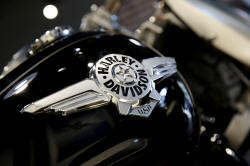|
Harley, which has struggled to increase sales beyond its core
baby-boomer market, in February unveiled a plan to boost profits
by shifting its focus back to big bikes, while eliminating
slow-selling models and exiting money-losing dealerships and
markets.
Although the company's performance in the latest quarter was
exaggerated by a favorable statistical base as most of its
dealerships in the United States were hit by pandemic-linked
lockdowns last year, it offered signs that Chief Executive
Officer Jochen Zeitz's strategy was gaining traction.
For example, unit sales of its bikes in the United States -
Harley's biggest market - were higher than in the second quarter
of 2019.
Similarly, the motorcycle maker has been able to drive up sales
despite spending less on marketing and promotions.
"We are starting to see the initial proof points as we execute
our Hardwire Strategy," Zeitz said in a statement.
The company revised down operating income guidance from
motorcycle sales to 6% to 8% in 2021 from 7%-9% estimated
earlier, citing higher tariffs on its bikes in the European
Union, its second-biggest market.
It, however, lifted the operating income growth forecast for its
financial services segment.
On an adjusted basis, Harley earned $1.41 per share in the
quarter, beating analysts' average estimate of $1.17 per share,
according to IBES data from Refinitiv.
Revenue from motorcycles and related products nearly doubled to
$1.33 billion. The company said its shipments doubled to 56,700
units in the second quarter.
(Reporting by Rajesh Kumar Singh in Chicago and Ankit Ajmera in
Bengaluru; Editing by Anil D'Silva and Steve Orlofsky)
[© 2021 Thomson Reuters. All rights
reserved.] Copyright 2021 Reuters. All rights reserved. This material may not be published,
broadcast, rewritten or redistributed.
Thompson Reuters is solely responsible for this content.

|
|





